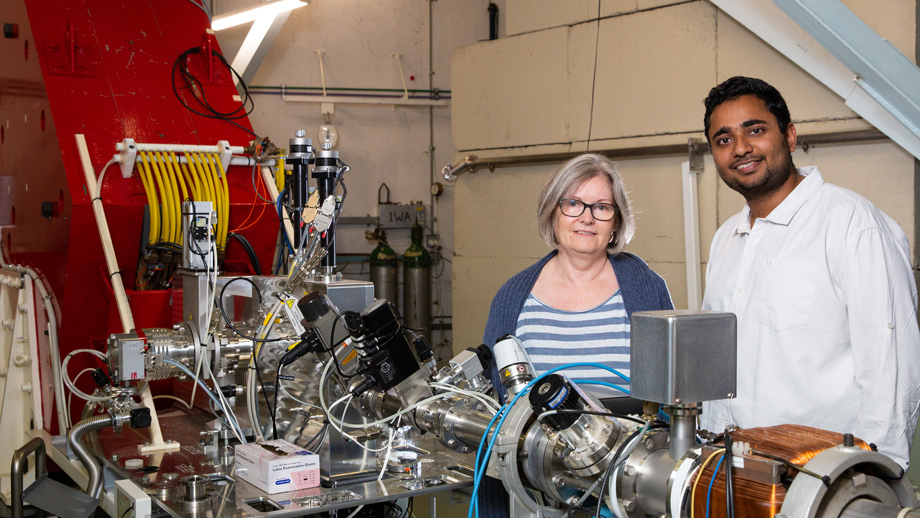
Astrophysics
Individual atoms of iron-60 isolated by HIAF are evidence of a nearby supernova in the recent few million years. HIAF is also testing new dark matter detectors for the SABRE project.
Studies of the fusion of heavy elements shed light on the reactions in extreme events, e.g. supernovae and neutron star mergers.

Environment
HIAF’s ability to accurately count rare isotopes has been used to deduce past climatic conditions, understand ground water flow and run off, measure pollution, such as from 1950s nuclear weapons testing, and investigate agricultural soil loss mechanisms.

Quantum dynamics
The wide range of possible ion beams and HIAF’s high voltage allow the dynamics of many reactions to be studied.
For example, formation of new superheavy elements, detailed mechanisms of fusion and fission of large nuclei, and decay chains that could potentially be used for energy storage.

Materials
HIAF’s capabilities enable the controlled creation of innovative materials, such as nano-porous semiconductors, and materials for use in detectors of high energy particles for medical, nuclear and high-energy research (such as particle physics and astronomy).
HIAF is also capable of extremely detailed analysis of material structure and composition.

Medical physics
Revolutionary new therapies are being developed at HIAF, including particle-based cancer therapies such as proton beams and auger electrons. HIAF is also regularly used for accurate calibration of medical equipment such as dosimeters.

Accelerator development
HIAF’s performance has been constantly honed since it was installed in 1973, ensuring it is still a world-class facility today.
Researchers work alongside expert mechanical, electronic and computer technicians to continuously monitor and improve all aspects of the facility.
Updated: 17 September 2024/ Responsible Officer: Director, RSPE/ Page Contact: Webmaster, RSPE






